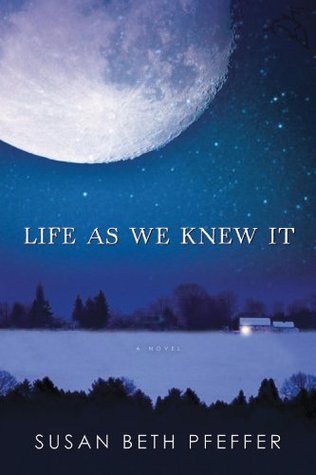TL;DR
In "Life As We Knew It," Susan Beth Pfeffer tells the gripping story of Miranda and her family's fight for survival after a meteor alters the Moon's orbit, unleashing catastrophic natural disasters and plunging their world into chaos.
What is Life As We Knew It about
"Life As We Knew It" explores the harrowing journey of Miranda, a teenager whose life turns upside down when a meteor brings the Moon closer to Earth, resulting in worldwide tsunamis, earthquakes, and volcanic eruptions. As society collapses, Miranda documents her family's struggle for survival through journal entries, revealing the emotional and physical challenges they face in a world transformed by disaster. The novel captures themes of resilience, hope, and the importance of family in the face of overwhelming adversity, showcasing a dystopian reality that forces the characters to confront their deepest fears and their will to endure.
Life As We Knew It 6 Key Takeaways
A meteor strikes the Moon, altering its orbit and causing global disasters.
The story begins with the sudden and unforeseen event of a meteor colliding with the Moon, leading to catastrophic changes on Earth. Tsunamis, earthquakes, and volcanic activity create chaos, forcing families to reassess their survival strategies.
Miranda's family retreats to their sunroom for safety.
As the world descends into turmoil, Miranda and her family find refuge in their sunroom, stockpiling food and relying on their dwindling resources. This setting becomes a symbol of hope and a sanctuary from the chaos outside.
The struggle for basic necessities intensifies as winter approaches.
As summer gives way to an unforgiving winter, the family faces dwindling supplies, forcing them to confront their reliance on each other and their determination to survive despite the bleak conditions.
Miranda's journal entries reveal her evolving emotions and fears.
Through her journal, Miranda expresses her fears, hopes, and the stark realities of life post-disaster, showcasing her emotional growth as she navigates the complexities of survival with her family.
The dynamics of family relationships shift under pressure.
The crisis strains the relationships within Miranda's family, highlighting themes of love, sacrifice, and the human capacity for both kindness and conflict in times of desperation.
Hope remains a central theme despite overwhelming despair.
Throughout their struggle, Miranda holds onto hope as an essential resource, illustrating the resilience of the human spirit even in the darkest of times.
Top Life As We Knew It Quotes
- "Hope is the most important thing we have left."
- "We can survive this, but we have to work together."
- "Life as we knew it is gone, but life can still be something worth living."
Who should read Life As We Knew It?
This book is ideal for middle-grade readers aged 11 to 13 who enjoy dystopian fiction and survival stories. It engages readers with its relatable characters and emotional depth, encouraging discussions about resilience, family, and the importance of hope during crises.
Life As We Knew It Best Reviews
- "A haunting portrayal of a family's resilience, Pfeffer's narrative leaves readers pondering the fragility of civilization and the strength found within family bonds." - The New York Times
- "Pfeffer masterfully weaves a tale of survival that is both terrifying and relatable, making readers question what they would do in a similar situation." - School Library Journal
People also liked these summaries
Life As We Knew It FAQs
What are the main themes of "Life As We Knew It"?
The book explores themes of survival, family dynamics, resilience, and the importance of hope in the face of disaster.
Is "Life As We Knew It" suitable for younger readers?
Yes, the book is recommended for readers aged 11 to 13, though it may benefit from adult discussions due to its intense subject matter.
